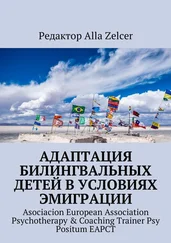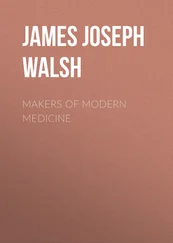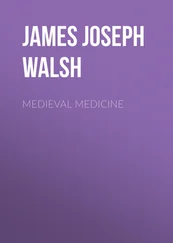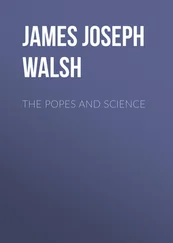James Walsh - Psychotherapy
Здесь есть возможность читать онлайн «James Walsh - Psychotherapy» — ознакомительный отрывок электронной книги совершенно бесплатно, а после прочтения отрывка купить полную версию. В некоторых случаях можно слушать аудио, скачать через торрент в формате fb2 и присутствует краткое содержание. Жанр: foreign_prose, psy_theraphy, foreign_edu, foreign_antique, на английском языке. Описание произведения, (предисловие) а так же отзывы посетителей доступны на портале библиотеки ЛибКат.
- Название:Psychotherapy
- Автор:
- Жанр:
- Год:неизвестен
- ISBN:нет данных
- Рейтинг книги:4 / 5. Голосов: 1
-
Избранное:Добавить в избранное
- Отзывы:
-
Ваша оценка:
- 80
- 1
- 2
- 3
- 4
- 5
Psychotherapy: краткое содержание, описание и аннотация
Предлагаем к чтению аннотацию, описание, краткое содержание или предисловие (зависит от того, что написал сам автор книги «Psychotherapy»). Если вы не нашли необходимую информацию о книге — напишите в комментариях, мы постараемся отыскать её.
Psychotherapy — читать онлайн ознакомительный отрывок
Ниже представлен текст книги, разбитый по страницам. Система сохранения места последней прочитанной страницы, позволяет с удобством читать онлайн бесплатно книгу «Psychotherapy», без необходимости каждый раз заново искать на чём Вы остановились. Поставьте закладку, и сможете в любой момент перейти на страницу, на которой закончили чтение.
Интервал:
Закладка:
Other Cures.—Fontana, toward the end of the eighteenth century, was sure that he had discovered in caustic potash an absolute specific for snake poisoning. He had had a series of cases, and felt that he had actually observed this substance following the snake poison into the system and neutralizing it. Its active effect on the external tissues proved eminently suggestive for the patient and good results followed. We have had many specifics since, and yet we are not quite sure how much any of them avail unless recent biological remedies prove lasting in their effects and are really of therapeutic efficiency.
Antidotes and Suggestion.—For many other poisons beside snake venom there have been announced supposed antidotes of all kinds. The literature of the antidotes used for opium is extremely interesting and even in recent times contains many disillusions. Twenty years ago our medical journals contained any number of cases in which a solution of potassium permanganate seemed to have proved effective in neutralizing not only opium itself but its alkaloids and derivatives. Not only was it efficacious, then, if taken while the opium was still in the stomach but, just as with Fontana's caustic potash and the snake venom, it followed the opium into the tissues and at least blunted its action. Numbers of cases were reported in which potassium permanganate was supposed to have had this desirable effect. The effect of alcohol in neutralizing carbolic acid attracted as much attention as did potassium permanganate for opium. Here there was no doubt that alcohol immediately after the external application of carbolic acid did prevent its corrosive action. It was supposed to do the same thing in the stomach and even, as some enthusiastic observers thought, followed the carbolic acid into the tissues. Here once more the claim is not proven and it is evident that the influence on patients' minds when small doses of carbolic acid were taken, was the real therapeutic factor at work.
Poultices in Suggestive Therapeutics.—Poultices represent another phase of the value of suggestion in medicine and surgery, though for many centuries those who used them were sure that the reasons for their employment were entirely physical and not psychic. All sorts of poultices have been used and each was supposed to do specific curative work. New forms of poultice material have been introduced, and physicians and patients have been certain that each worked wonders of its own. The drawing power of the poultice was extolled until patients dwelt on the idea that this external application was literally engaged in extracting from them, even from distant portions of their anatomy, virulent material that would do harm if allowed to remain in them. Poultices in suitable cases, because they represent moist heat, do good by counter irritation, by bringing about the expulsion of gas, by diverting internal hyperemia to external tissues, but most of their supposed efficacy has been really due to the bother required to prepare and apply them, the discomfort of having them on, and the feeling that now something had been done and the aches and pains must get better. They are still used, but to a much less degree than before. Now the ordinary teaching is that a hot water bag wrapped in dry flannel, if dry heat is the agent desired, and in moist flannel, if moist heat is the desideratum, is much more efficient. It takes but a few minutes for a poultice, no matter how hot when applied—and occasionally in the olden time they were applied so warm as to burn or scald—to decrease in temperature to that of the body. After that they represent only a moist compress.
It is easy to understand that the suggestive influence of poultices might serve for an age that knew less about the realities of the efficacy of external applications than ours. As a matter of fact, we have, nevertheless, shown ourselves to be quite as credulous and ready to receive analogous remedies as the past generation. With the waning of the popularity of the poultice, not only among the profession, but also among the people generally, there came into use various plasters which were supposed to have even more wonderful efficacy than the poultice of the olden time. These required a good deal of trouble to apply and once applied remained on for hours, and so continued to produce a definite curative effect on patients' minds. When first introduced, exaggerated claims were made for their therapeutic value and a regular crusade to diffuse correct information regarding them had to be made, in order to set them in their proper place as mere wet compresses, without any therapeutic efficiency beyond that of cloths wrung out in water and kept in touch with the skin.
Poultices and the Doctrine of Signatures .—There was a general impression in the past that the indication of the ailment for which substances are medically useful has been set on them by nature, either through the color, or the form of the plant, or other qualities. In general, the law of similars is supposed to hold in the doctrine of signatures—like cures like. Hence the cornmeal poultice for light jaundice, the flax-seed meal poultice for darker jaundiced conditions and for tendencies to gangrene. The charcoal poultice was employed for this same purpose with no better reason, though some of its efficacy may have been due to oxygen present in the pores of the charcoal. I have already spoken of the appeal to the patient's mind in the use of the cranberry for erysipelas, and various other berries were used in like manner on the doctrine of signatures.
Deterrent Materials and Suggestion .—Another basic principle in the making of poultices was the use of deterrent, repulsive materials, because these were more effective on the patient's mind. All the ordures were so employed. Goose and chicken excrement was supposed to be particularly efficacious for many of the purposes for which we now use iodine. It was applied over sprains and bruises on the unbroken skin. Cow-dung was employed as a poultice for sprains of the larger joints, especially on the feet and legs, but to be efficacious it had to be applied fresh. I have known, within twenty years, of physicians in two so supposedly cultured parts of the country as Pennsylvania and Maryland, to employ such ordure poultices for the cure of sprains and dislocations, and these physicians had a great reputation among the people of their countryside. They were known especially as good bone doctors, and their use of such deterrent materials instead of decreasing their practices rather added to them.
Ointments.—In the Middle Ages ointments made of the most far-fetched materials were employed even by distinguished surgeons. That, indeed, is the one serious flaw in the surgery of the thirteenth and fourteenth centuries, when they did everything else so well. These ointments contained all manner of materials that were likely to impress patients and make them feel that something wonderful was being done for them. Crushed insects of all kinds were employed for external lesions. Here the doctrine of similars seems once more to have been in play. Insects gave creepy feelings, and whenever such feelings, or the paresthesiae generally, were complained of, a poultice or ointment made of insects seemed to be the natural remedy. The more repellent the materials, the more efficient they were likely to be. Many of the paresthesiae are due to neurotic conditions and it is not surprising that when an ointment of crushed lice—these insects being collected from barnyard fowls or from hogs—was used, the suggestive influence was strong. Another important ingredient in ointments were portions of dead bodies. A bit of a mummy from the East was supposed to be particularly efficacious. Portions of the bodies of men who had been hanged, or of the moss that grew on the skulls of malefactors whose bodies had been long exposed in chains to the air, were also favorite ingredients. Plants and shrubs gathered in graveyards, especially in the dark of the moon, because on account of the terror of the place they were then harder to get, also had a great reputation.
Читать дальшеИнтервал:
Закладка:
Похожие книги на «Psychotherapy»
Представляем Вашему вниманию похожие книги на «Psychotherapy» списком для выбора. Мы отобрали схожую по названию и смыслу литературу в надежде предоставить читателям больше вариантов отыскать новые, интересные, ещё непрочитанные произведения.
Обсуждение, отзывы о книге «Psychotherapy» и просто собственные мнения читателей. Оставьте ваши комментарии, напишите, что Вы думаете о произведении, его смысле или главных героях. Укажите что конкретно понравилось, а что нет, и почему Вы так считаете.












